Jeff had the opportunity to do another dissection with the missionary kids when our team mates butchered their pig. Eight 1st-4th graders watched with wide eyes as Jeff dissected the pig’s heart and eye ball. He explained blood flow and circulation and about the valves and chambers. The kids were surprised at how big the heart was (the pig’s heart is about the size of their heart) and that people can use pig valves when their own heart valves don’t work. With the eye, he explained the vision process as he cut into the various layers. The kids thought the “eye jelly” was pretty cool. Jeff also gave a bonus dissection on the brain and lungs. Jeff explained about strokes and when different parts of the brain are affected, different parts of the body can be affected. To this, one boy asked, “What part of the brain is affected when you have a breast stroke.”
All the kids looking on as the dissection begins

Jeff cutting open the pig's heart

Pig's eyeball...gross

As i researched information for the kids i can across these interesting heart and eye facts.
INTERESTING EYE FACTS
The eye continues to grow, gradually, to a length of about 24-25 millimeters, or about 1 inch, in adulthood. A ping-pong ball is about 1½ inch in diameter, which makes the average adult eyeball about 2/3 the size of a ping-pong ball.
The average person blinks about 12 times a minute. That's 10,080 blinks in a kids day (14 waking hours). That's why when someone says "it happened in the blink of an eye," they mean it happened really fast.
An eagle can see a lot further than a human. It can see a rabbit about 1 mile or 1760 yards away. The average person needs to be about 550 yards away to see the same rabbit. That's why when someone says "you must have eagle eyes," they mean you can see really far.
People who are color blind just can't see things in as many colors as people who have normal vision, and they cannot see certain colors like red, green, and some blues.
It is a common misconception that bats are blind. Almost all bats can see, and their sense of sight and smell is well developed, but these bats don't use their eyes to "see" where they're going. They use sound waves. They make high pitched sounds and then listen for the echoes caused when the sounds bounce off an object. Some bats can fly at a speed of up to 30 miles per hour. Their "radar" must be pretty good to fly that fast at night! Now you know why if someone says "you're as a blind as a bat," they mean you missed something or didn't see it.
Blinking helps to wash tears over our eyeballs. That keeps them clean and moist. If something is about to hit our eye, we will blink automatically.
Our body has some natural protection for our eyes. Our eyelashes help to keep dirt out of our eyes. Our eyebrows are made to keep sweat from running into our eyes.
The study of the iris of the eye is called iridology.
The shark cornea has been used in eye surgery, since its cornea is similar to a human cornea.
The number one cause of blindness in adults in the United States is diabetes.
The eyeball of a human weighs approximately 28 grams.
The eye of a human can distinguish 500 shades of the gray.
The cornea is the only living tissue in the human body that does not contain any blood vessels.
Sailors once thought that wearing a gold earring would improve their eyesight.
Research has indicated that a tie that is on too tight cam increase the risk of glaucoma in men.
People generally read 25% slower from a computer screen compared to paper.
Men are able to read fine print better than women.
AMAZING FACTS ABOUT THE HEART
Blood flow throughout the human body is greatest during systole. However, blood flow in the heart is greatest during diastole. When systole occurs the heart contracts, causing the coronory arteries to constrict and reduce blood flow through the heart while increasing it throughout the rest of the body. The opposite occurs during diastole.
Your heart beats: 100,000 times a day, 35 million times a year, and 2.5 billion times a lifetime (on average)
Your heart is approximately the same size as your fist and weighs less than a pound.
Squeeze a tennis ball as hard as you can with your fist. This is approximately the same amount of force your heart uses every time it pumps blood throughout your body.
In an average lifetime, the heart pumps 1 million barrels of blood.
The aorta artery is the largest artery in the body with a diameter the size of a garden hose, and yet it takes 10 capillaries to equal one human hair in thickness.
The sounds made by your heart when it beats are the sounds of the heart valves opening and closing.
Many people place their hand over the left side of their chest thinking it is the actual location of their heart. In actuality, the heart is in the center of your chest. However, it beats stronger on the left side of your chest because it is slightly tilted to the left, and it taps agianst your chest there.
When the ancient Egyptians would prepare a body for burial, the heart was the only organ that they would leave in the body. They believed it had powers necessary for entering the afterlife.
The average adult heart beats 72 times per minute at rest, but it can beat 200 times per minute during exercise.
Enough power is generated in the heart in one day to drive a car 20 miles.
Your heart pumps 9 pints of blood per minute.
The heart is the hardest working muscle in your body.
Your heart pumps 1,500 gallons of blood every day.
Women hearts beat faster than men.
The human heart can create enough pressure that it could squirt blood at a distance of thirty feet.
The first open heart surgery was performed in 1893.
The right lung of a human is larger than the left one. This is because of the space and placement of the heart.
In a lifetime, the heart pumps about one million barrels of blood.
In 1967, the first successful heart transplant was performed in Cape Town, South Africa.
Most heart attacks occur between the hours of 8 and 9 AM.
At one time it was thought that the heart controlled a person's emotions.
A pig heart is very similar to the human heart in anatomy, size and function. Its availability in most areas of the world, along with the similarities to the human heart, make pig heart tissue ideal for transplant into humans.




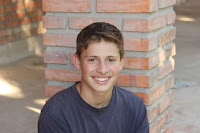


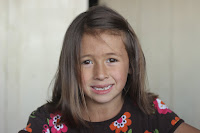
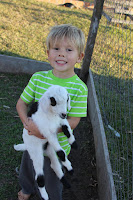
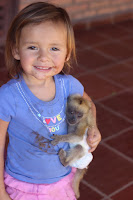


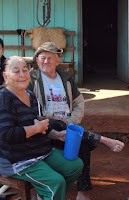













No comments:
Post a Comment